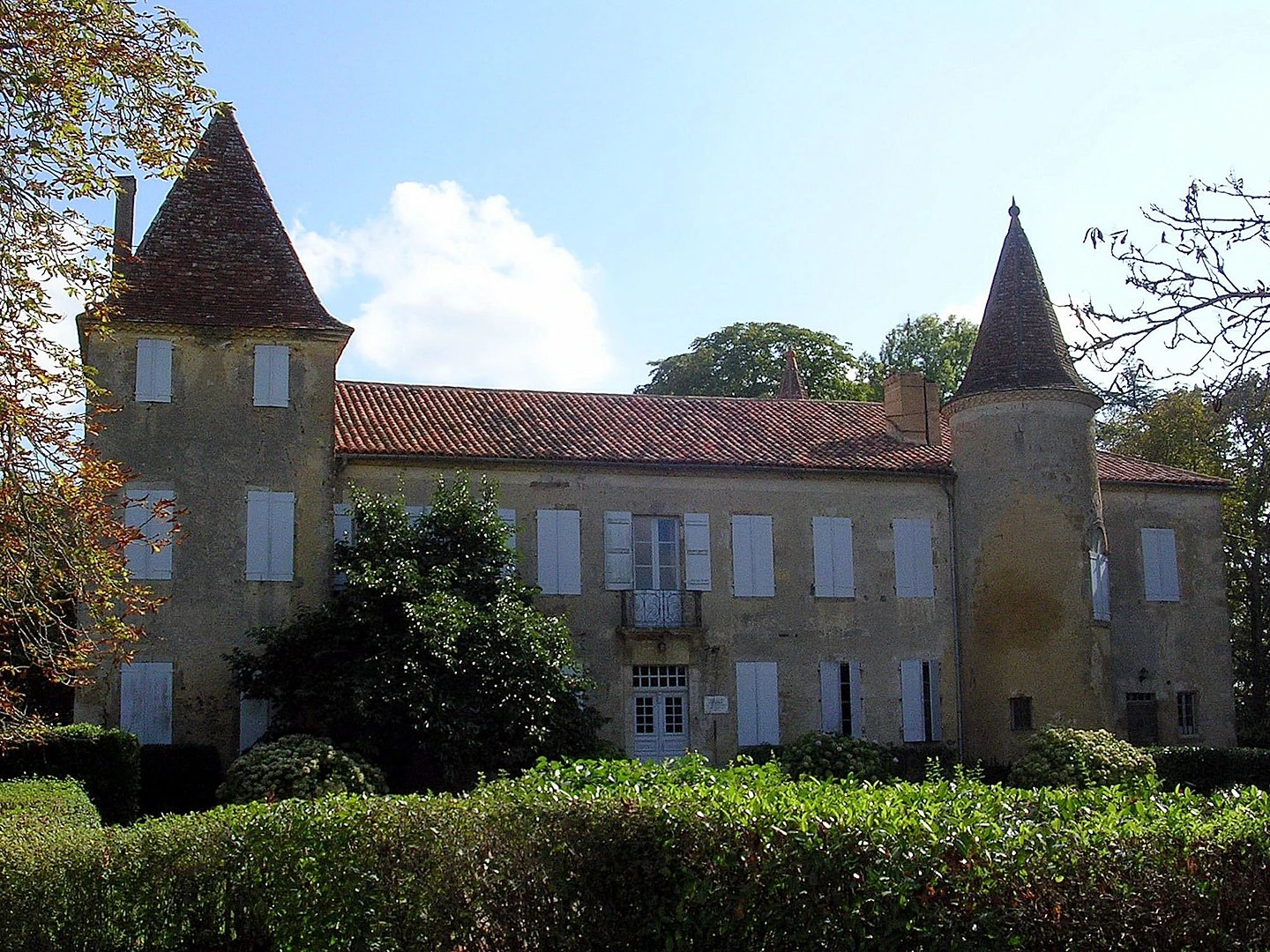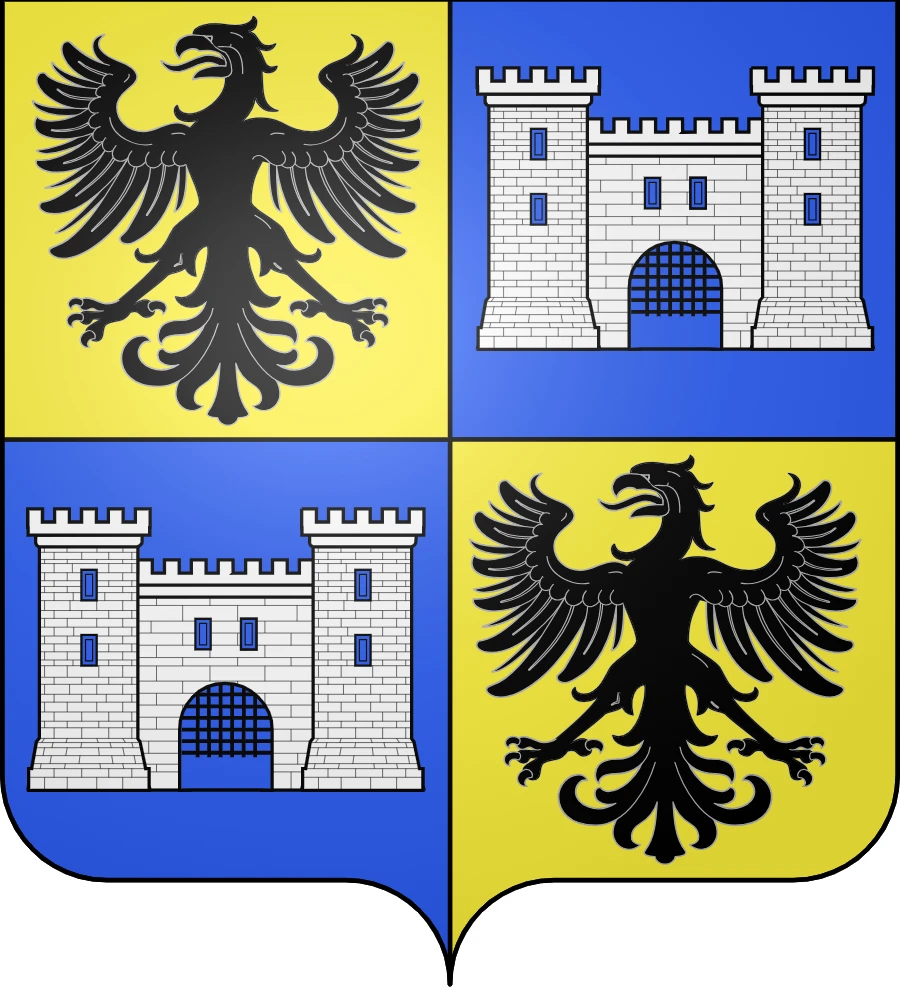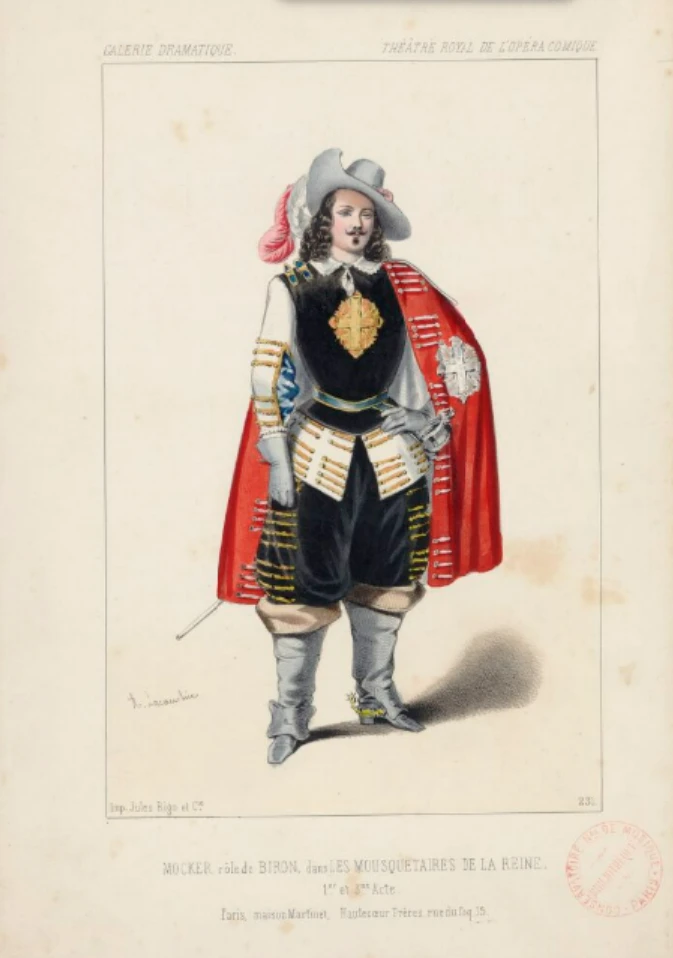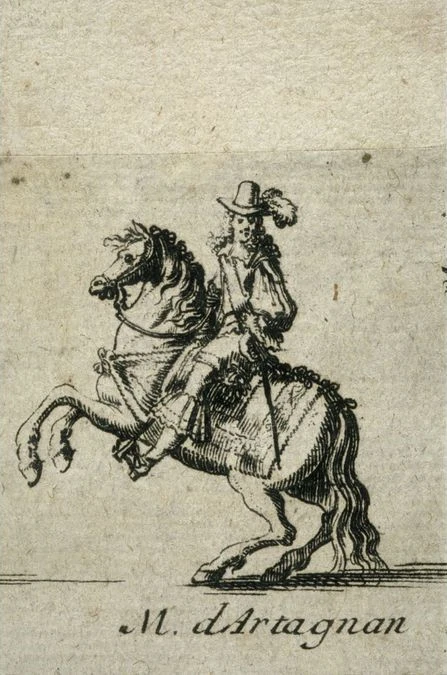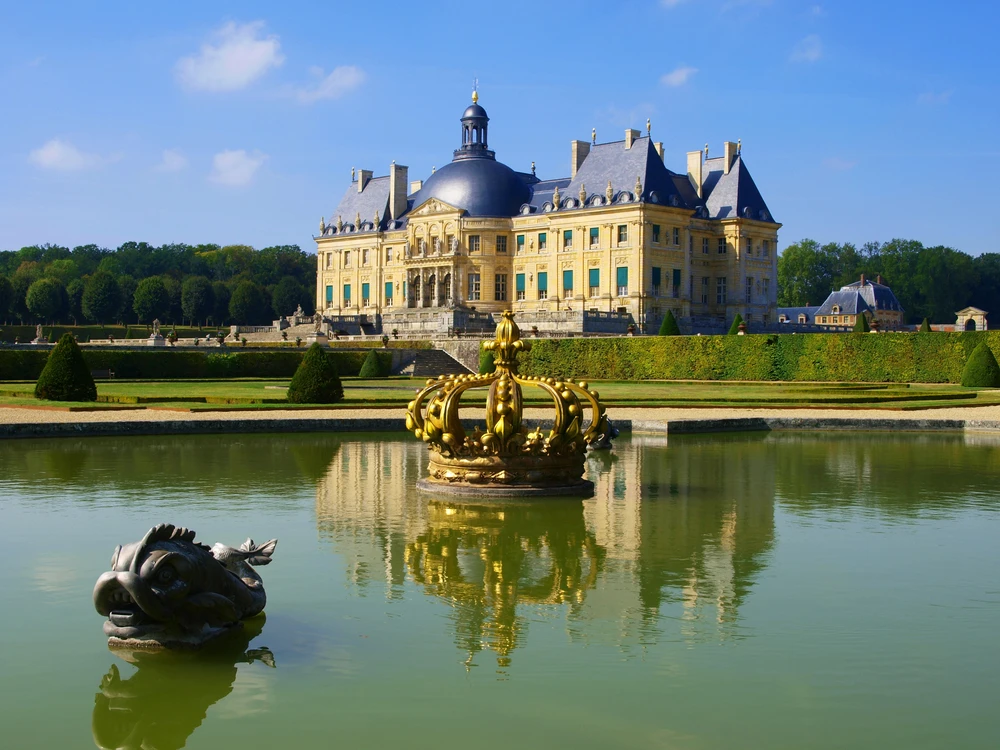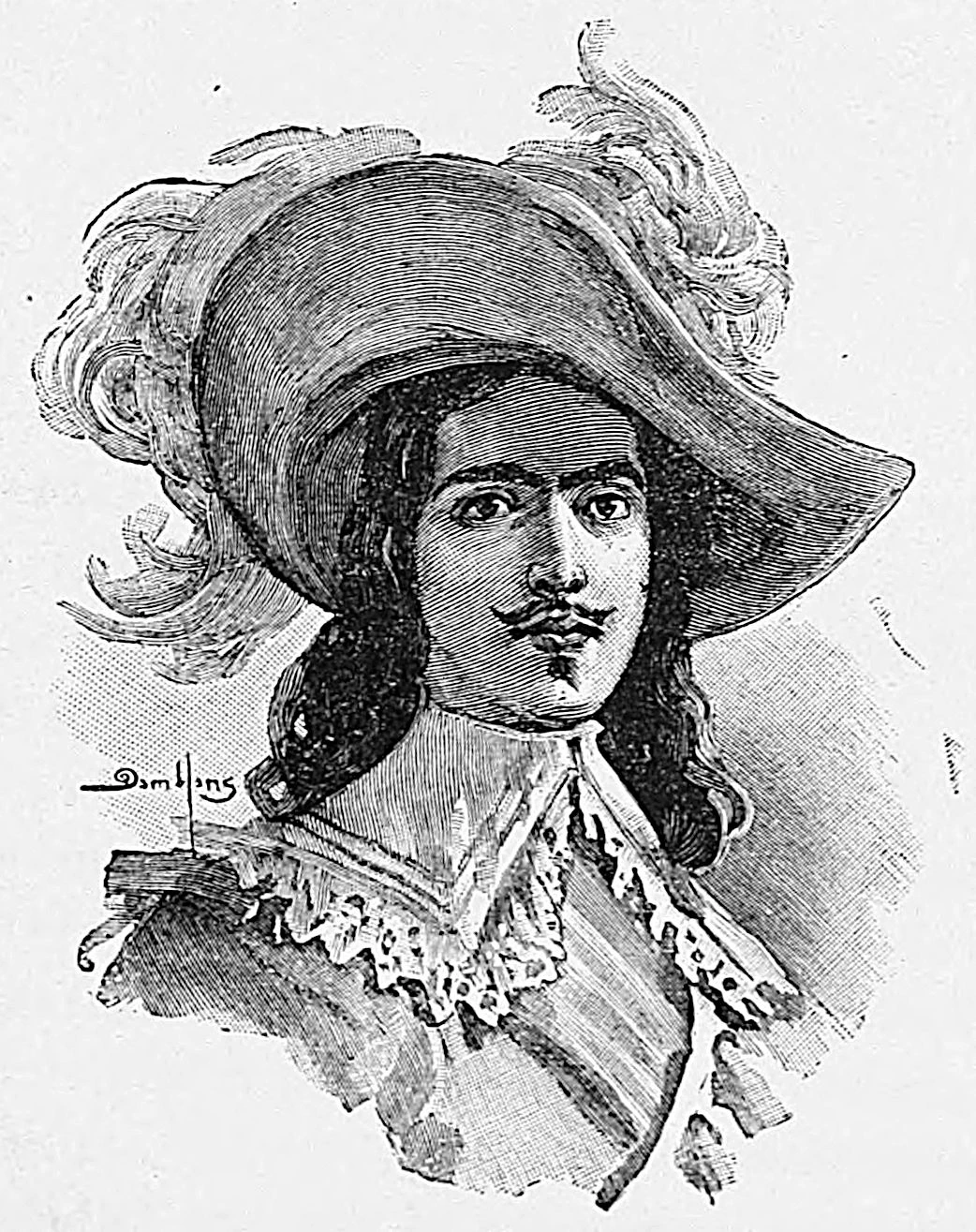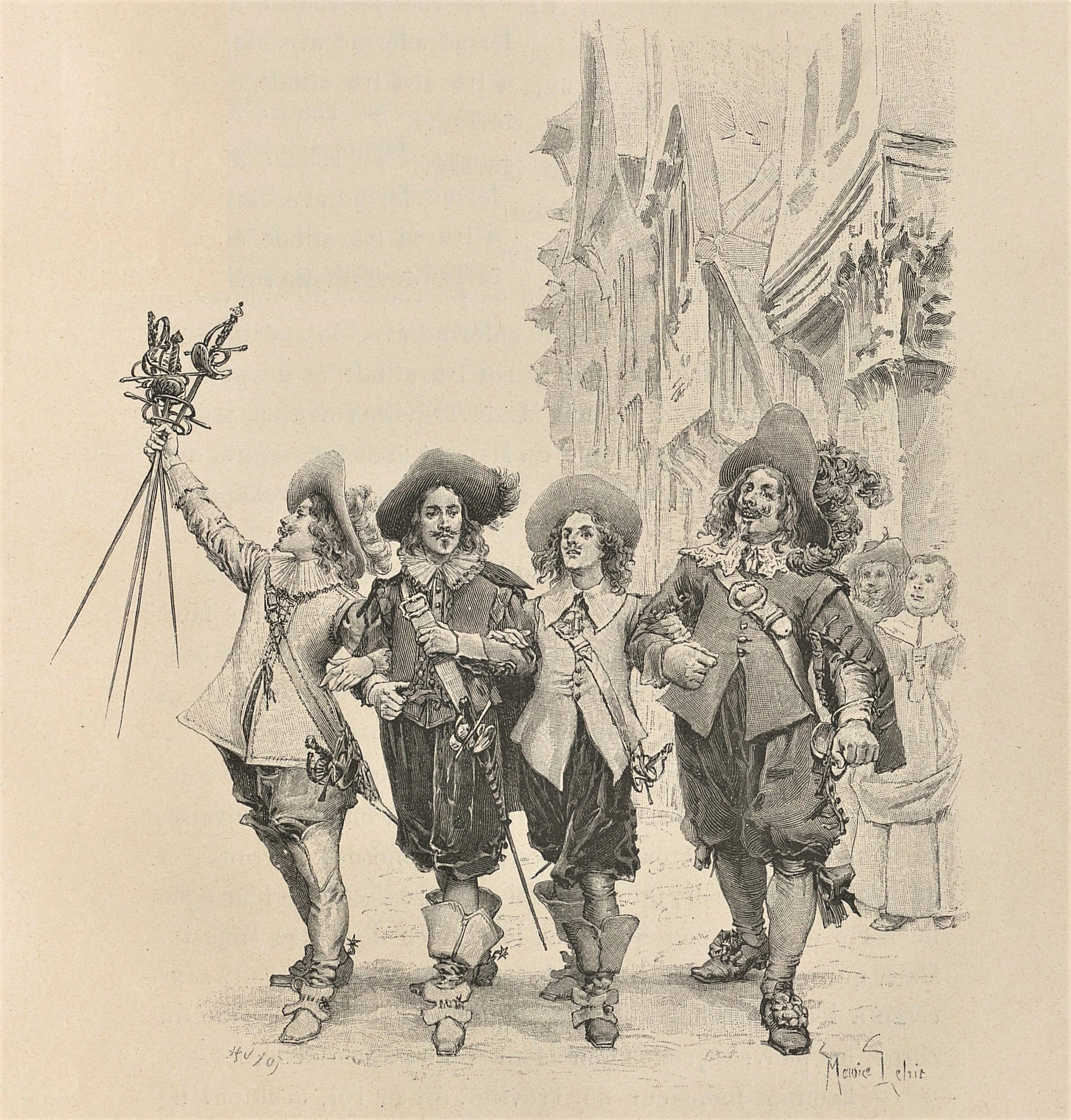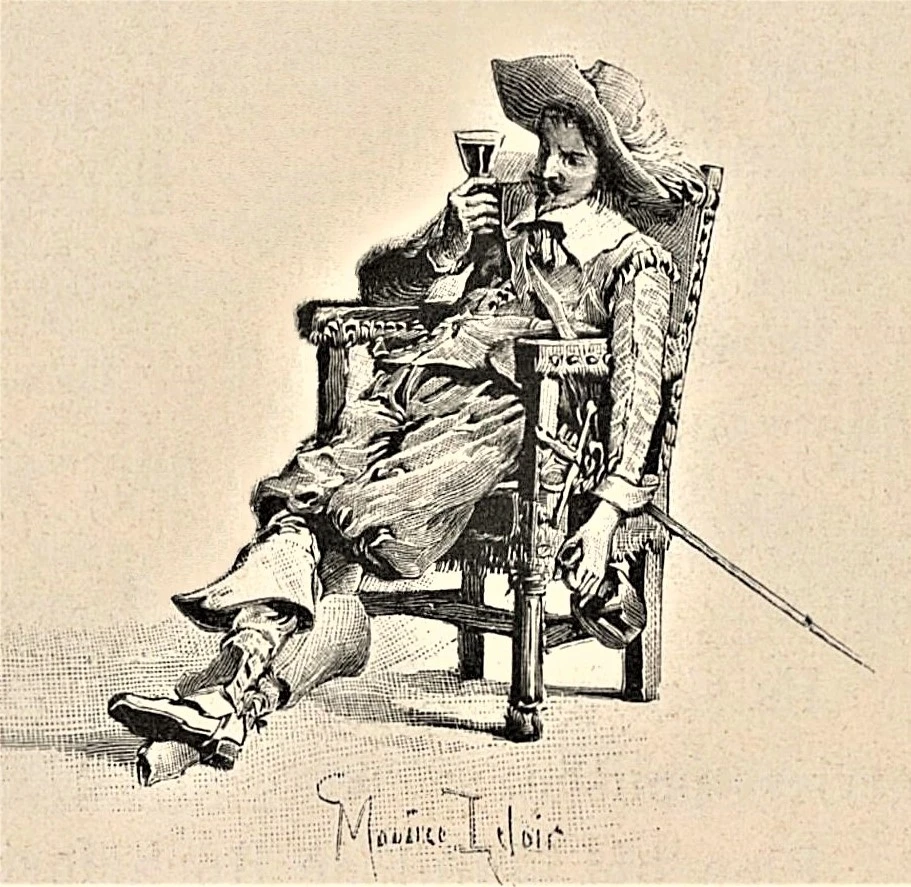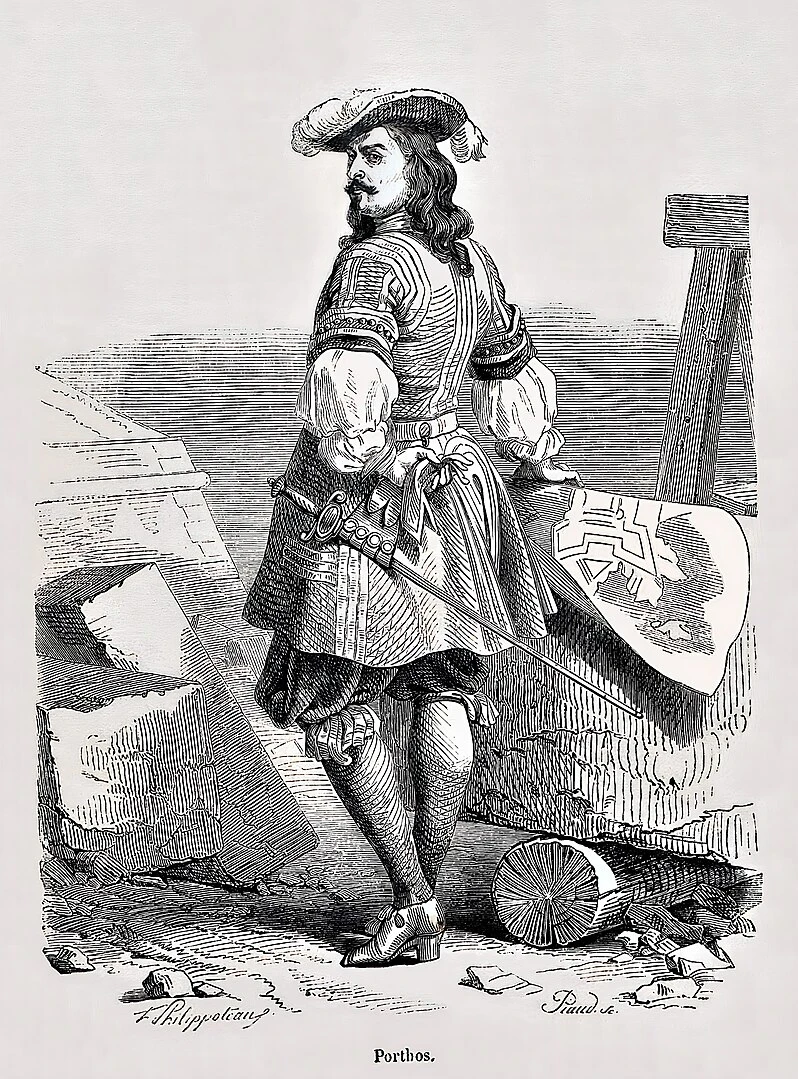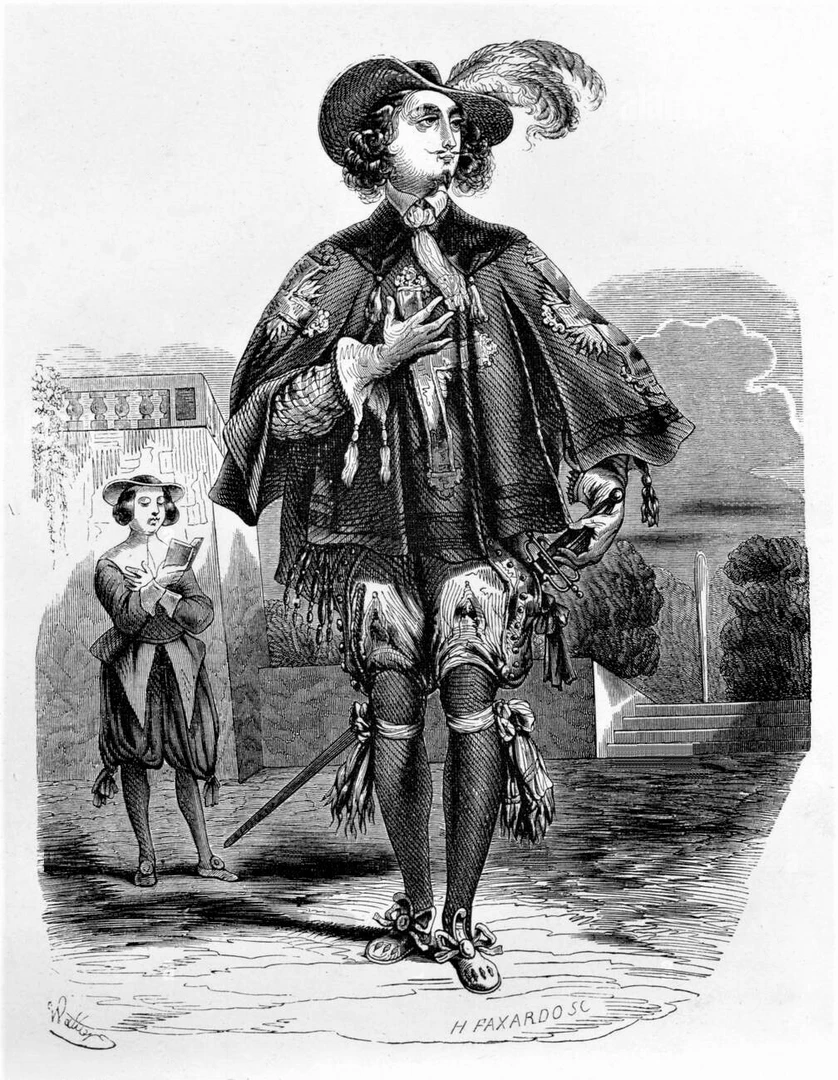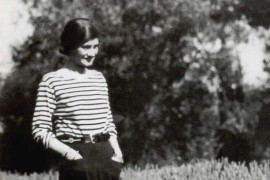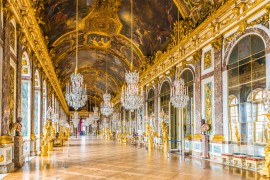D'Artagnan, a poor nobleman who becomes a musketeer.
4th child in a large family
Castelmore Castle, the birthplace of d'Artagnan, still exists. It has changed a lot, but the kitchen is original. Photo chosen by monsieur de France: By I, Jibi44, CC BY 2.5, https://commons.wikimedia.org/w/index.php?curid=2254596
Charles de Batz de Castelmore d'Artagnan was born between 1611 and 1615 at Château de Castelmore in Lupiac, Gers. He was the 4th of 7 siblings (4 boys and 3 girls). The family was noble but not wealthy. That said, d'Artagnan's parents were keen to give their boys a good education, and a tutor taught them the basics of mathematics, history and French. Like all young noblemen in the 17th century, especially in Gascony, young d'Artagnan learns to use a sword at an early age, thanks to retired soldiers, and he learns to ride a horse. Gascony at the time was very poor, and cadets inherited nothing. So the young d'Artagnan had to leave his native land and do what his older brother had done: ride to Paris.
The coat of arms of d'Artagnan's family, the de Batz de Castelmore. Image chosen by monsieur de France: wikicommons.
D'Artagnan, the king's musketeer
He began his military career in 1640 , starting in the French Guards regiment on the recommendation of a man who knew d'Artagnan's mother well: Monsieur de Tréville. He became a king's musketeer, an elite corps created by Louis XIII in 1622 for men equipped with muskets, a kind of long rifle (not at all practical). It was during this period of his life that d'Artagnan became acquainted with some of the most important figures in the French state: Queen Anne of Austria, Cardinal de Mazarin. Although there are few records of this, we do know that d'Artagnan was a true confidant of first Cardinal de Mazarin, then Louis XIV. The king was always very fond of him.
A king's musketeer imagined for an opera in 1846 / Illustration chosen by Monsieur de France: Gallica.fr / BNF
The king's right-hand man
D'Artagnan drawn by engraver Nicolas Cochin in 1661.
Highly committed to Mazarin, d'Artagnan was a man he trusted. He was one of those who accompanied the cardinal abroad when he was forced to leave France because of the Fronde in 1651. The Fronde was an uprising of the nobility, led by the Prince de Condé, against the absolute monarchy and especially against Mazarin, the prime minister of an infant Louis XIV. There are many traces of d'Artagnan in the secret correspondence between Mazarin and Queen Anne of Austria, and even letters in which the young Louis XIV asks if d'Artagnan is well. When the Fronde is defeated and Cardinal de Mazarin returns to Paris, he becomes a sort of bodyguard to the 22-year-old King Louis XIV, who travels to Saint Jean de Luz in the Basque Country to marry the Spanish Infanta. The journey takes him past d'Artagnan's family castle, where he is authorized by the king to stop off to embrace his family and pay his respects at the tomb of his parents, who died shortly after his departure for Paris. On his return from the Netherlands, the arrival of Louis XIV and his wife Marie Thérèse d'Autriche in Paris was d'Artagnan's crowning glory, and in 1661 he marched alongside the king as the royal couple entered Paris. The engraving of this event is the only surviving print of d'Artagnan. It was at this time that d'Artagnan began to make his fortune (the king offered him lucrative positions).
D'Artagnan made French history in 1661
The Château de Vaux-le-Vicomte: so beautiful that it gave Louis XIV back his owner who was arrested by d'Artagnan / Photo chosen by monsieurdefrance.com: dépositphotos.
In September 1661, Louis XIV was furious with his superintendent of finance, Nicolas Fouquet. The man was Minister of Finance and extremely wealthy. And he doesn't have the intelligence to be discreet - on the contrary, he invites the king to his brand-new château at Vaux le Vicomte. Louis XIV, who lives in the Louvre in less beauty and comfort, is furious with his minister, suspected of embezzlement. A few months later, the king had Nicolas Fouquet arrested as he was leaving a royal council at the Château de Nantes. The man who arrested Fouquet was d'Artagnan. Proof of the king's immense confidence in Fouquet's ability to revolt, the date of the minister's arrest (who was to spend the rest of his life locked away in a mountain fortress) was not decided until d'Artagnan was no longer ill.
D'Artagnan's signature / image chosen by Monsieur de France By http://fictionbook.ru/author/ptifis_jan_kristian/istinniyyi_d_artanyan/_14.jpg, Domaine public, https://commons.wikimedia.org/w/index.php?curid=1907148
Faithful to his king until death
d'Artagnan as seen by Eugène Damblans in 1896
Married to Anne Charlotte Boyer de Chelancy in 1659, he had two children: Louis (1660), who became Comte d'Artagnan, and Louis (also) in 1661. Ever loyal to Louis XIV (who personally signed his marriage certificate), d'Artagnan fought every battle. In fact, he died fighting for the Sun King at the Battle of Maastricht on June 25, 1673. It is said that he was hit by a bullet and fell from his horse. 4 musketeers died trying to recover the body. What is certain is that no one knows where d'Artagnan's body lies.
Dumas makes d'Artagnan a star
Based on the few writings left by the musketeer, and more or less true accounts, in 1844 Alexandre Dumas père imagined the famous d'Artagnan, a young cadet from Gasconyd'Artagnan, a young cadet from Gascony in love with Constance Bonacieux, and accomplishing exploits alongside three musketeers, Athos, Porthos and Aramis.Their motto was "one for all and all for one". Initially, Dumas proposed "Athos Porthos et Aramis" as the title for his short story, which was published regularly in the newspaper "Le Siècle". The publisher, finding the title difficult to remember, suggested "Les trois mousquetaires" instead. Dumas accepted the title, which he found all the more amusing in that the musketeers were ... 4 !
The Three Musketeers by Jules Huyot after Maurice Leloir
Did the Three Musketeers ever exist?
Yes, Alexandre DUMAS based his writing of The Three Musketeers on numerous documents, including memoirs written after d'Artagnan's death. Athos, Porthos and Aramis did exist, even if they didn't necessarily have the adventures Dumas had in store for them.
Athos
Athos illustration selected by monsieurdefrance.com : Athos et la dive bouteille ( Athos and the Dive Bottle), detail of the illustration depicting the fate of the four friends at the end of the story / Engraving by Jules Huyot after a drawing by Maurice Leloir for a reprint of Alexandre Dumas' novel Les Trois Mousquetaires, Paris, Calmann-Lévy, 1894. via Wikicommons
Athos, Olivier de la Fère was born in 1615 in Béarn. He died at the age of 30 in 1645. He is thought to have died in a duel.
Porthos
Isaac de Portau, born in 1615 to a Protestant family, is said to have inspired Porthos. He probably knew d'Artagnan, since he served in the French Guards, then in the Musketeers, at the same time as d'Artagnan.
Porthos: illustration chosen by monsieurdefrance.com: Porthos in front of the fortification plans for Belle-Île-en-Mer. Engraving by Antoine-Alphée Piaud after an illustration by Henri Félix Emmanuel Philippoteaux for Alexandre Dumas' novel Le Vicomte de Bragelonne, Paris, chez Marescq & Cie, libraires, 1852. via Antoine-Alphée Piaud/ After Henri Félix Emmanuel Philippoteaux - This image comes from the Gallica online library under ARK identifier bpt6k6570978d/f131, Domaine public, https://commons.wikimedia.org/w/index.php?curid=119065639
Aramis
Aramis represented in 1846 / Illustration chosen by monsieurdefrance.com: By D'après Edouard Wattier - Page 236 of the novel Les Trois Mousquetaires, written by Alexandre Dumas and published by J.-B. Fellens and L.-P. Dufour in 1849 (reprint). Domaine public, https://commons.wikimedia.org/w/index.php?curid=48034879
The character was inspired by Henri d'Aramitz, a knight from Béarn born in 1620. He was lay abbot of Aramits Abbey (Pyrénées-Atlantiques), a title inherited from his father. He had 4 children and died in the 1670s.v
FAQ
Who was d'Artagnan in the story?
Charles de Batz de Castelmore, known as d'Artagnan, was a 17thᵉ century Gascon officer, musketeer to the king and confidant of Mazarin and then Louis XIV.
Did D'Artagnan really exist?
Yes, d'Artagnan did exist. However, his image was largely transformed by Alexandre Dumas, who made him immortal in his novel "Les Trois Mousquetaires".
What role did d'Artagnan play with King Louis XIV?
D'Artagnan served as the king's closest officer. He was entrusted with sensitive missions, including the arrest of superintendent Nicolas Fouquet in 1661.
How did d'Artagnan die?
He died on June 25, 1673 during the siege of Maastricht, hit by a bullet while leading the assault.
Where do we honor d'Artagnan's memory today?
Mainly in his native Gers, in Lupiac and Auch, where statues, museums and commemorations recall his story.

